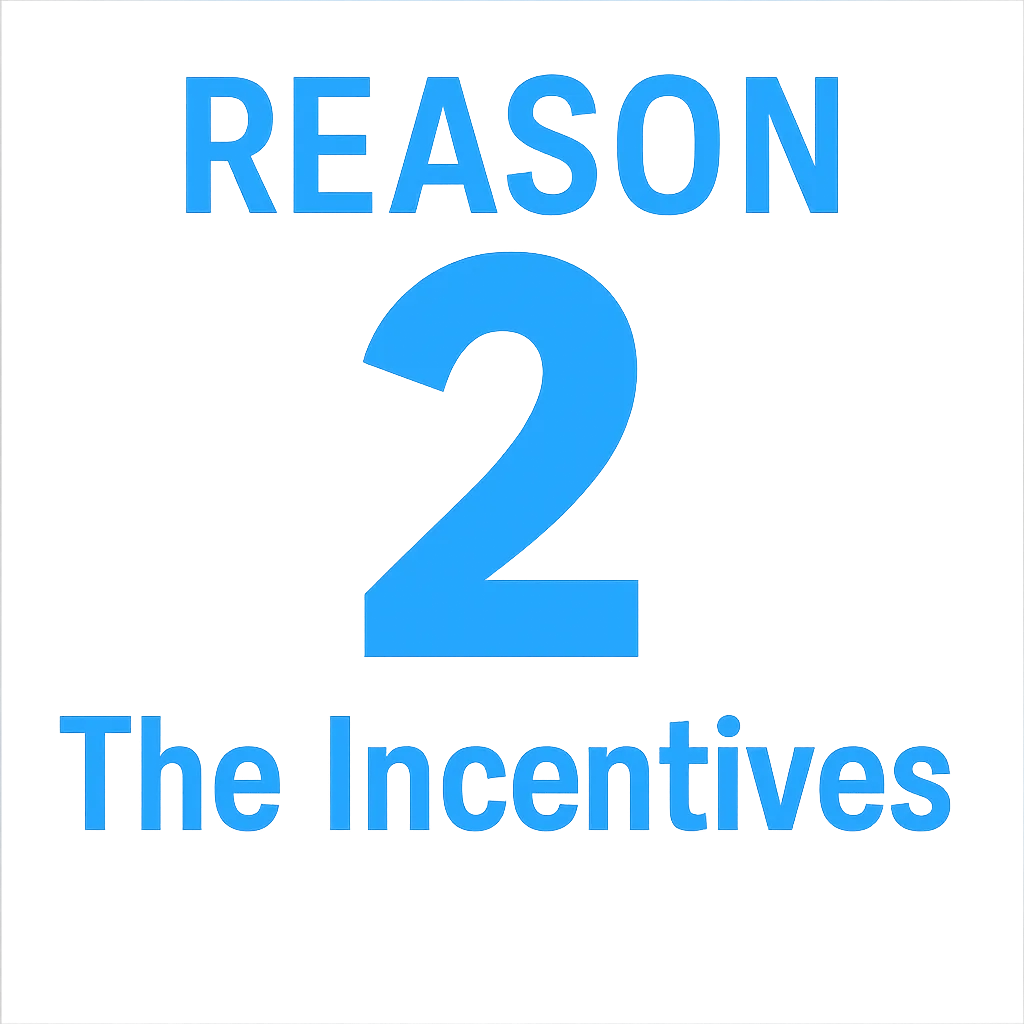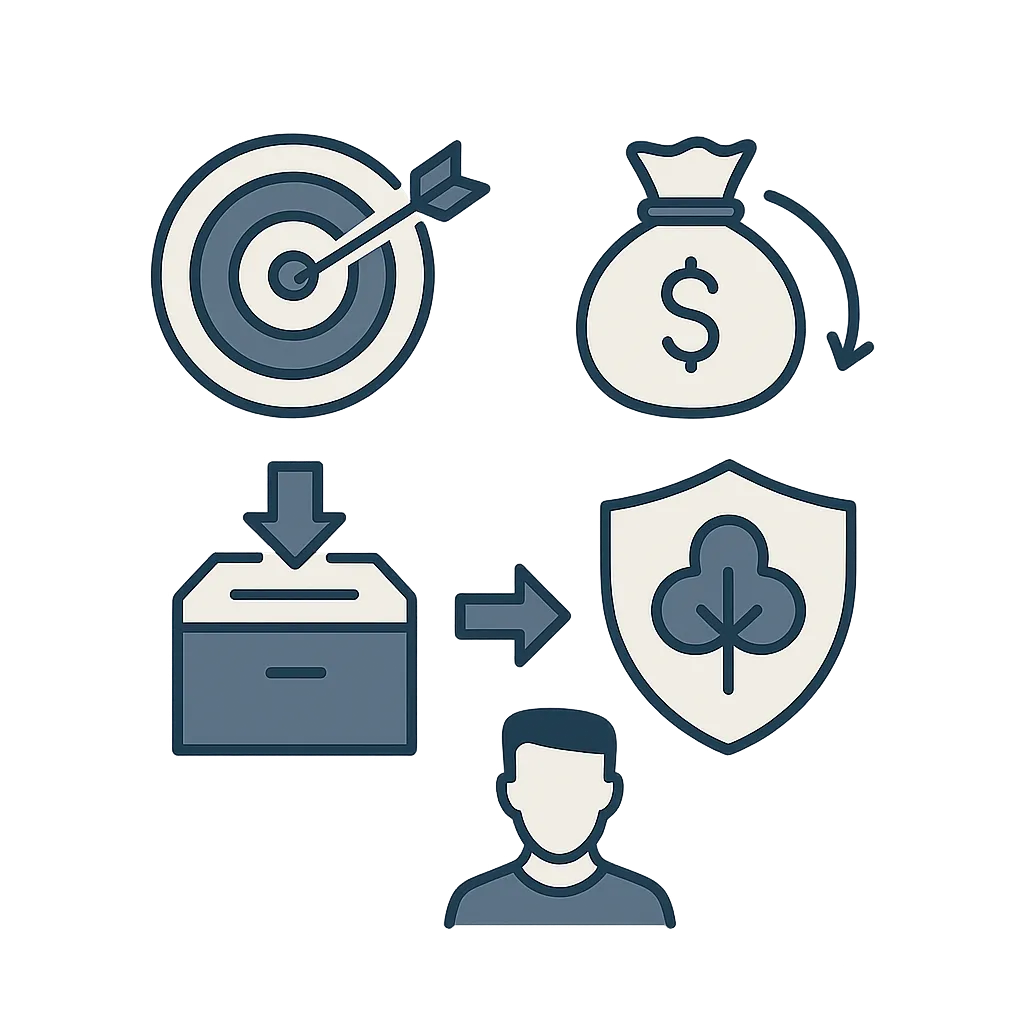

Why hasn’t anyone shown you this tax‑advantaged retirement play?
Most advisors miss it. You don’t have to. Take 60 seconds to see if it fits your situation.
Why hasn’t anyone shown you this tax‑advantaged retirement play?
Most advisors miss it. You don’t have to. Take 60 seconds to see if it fits your situation.
Two Simple Reasons Why
You Haven't Heard Of this...
All the tools you need to grow in one place

Many advisors aren’t trained on lesser‑known, tax‑advantaged structures or how to set them up correctly for the policyholder.

Plenty of advisors recommend the products their firm prefers, not necessarily the ones that optimize after‑tax outcomes for you.
The Result
A tiny fraction of Americans ever use this kind of strategy,
while most stash money into taxable or contribution‑capped accounts by default.
A tiny fraction of Americans ever use this kind of strategy, while most stash money into taxable or contribution‑capped accounts by default.
What this kind of account can help you do...
Grow money in a tax-advantaged way
Flexible access strategies if designed correctly
Target Tax-free distributions in retirment
When structured and maintained according to current guidelines.
Avoid contribution caps
Common to Roth IRAs and 401(k)s
inprove legecy planning
So more of your money goes to people you love, not to taxes (when coordinated with your CPA/attorney).

"Too good to be true?" No just under used.
Accounts like these aren’t new. Properly structured, they’ve been used for generations by affluent families and public figures to grow wealth in a tax‑advantaged way and pass it on efficiently. They’re fully legal and sit within current U.S. rules when set up and funded the right way.
Translation: It’s not a magic trick. It’s a legitimate strategy most people never get shown.

Who Typically Pre-qualifies?
Household income $100,000+
Good to excellent Health (for certain product types)
Long term horizon (ideally 10+ years)
Willing to fund consistently for best outcomes
If that sounds like you, step through our quick check to see fit and next steps.


How Pre-qualification Works
(takes aproximately 40 seconds)
1. Answer 5 quick questions about age, income, timeline, and goals.
2. Instant pre qualification results with simple "likely fit / boarder line / not a fit score.
3. If you're a likely fit, book a no-obligation 15 min call to verify details and outline a personalized plan.

Why People Choose This Path
Keep more of what you earn with potential tax-free income later
Less volatility anxiety if designed with protection features
Flexibility for big expenses (education, business, second home) without derailing your entire plan
Privacy & control with options traditional accounts don't offer


What this approach can help you accomplish
Target tax‑free distributions in retirement if the policy is structured and maintained within current rules.
Bypass common contribution caps seen with Roth IRAs and 401(k)s (specifics vary).
Access funds strategically for big purchases or opportunities without blowing up your plan.
Add downside buffers or guarantees many market‑only accounts don’t have (product‑dependent).
Improve legacy efficiency so more goes to family and causes, less to taxes, when coordinated with your CPA/attorney.

Why your advisor may not have mentioned it
Training Gap: Many reps aren't taught how to design these correctly.
Shelf Limits: Firms prefer a narrow product menu, simple to supervise, and easier to scale.
Incentives: Recommendations often follow company priorities, not your optimal after-tax outcome.
Result: A small minority ever uses this strategy while most default into capped or fully taxable accounts.
To see if you qualify just fill out the quick simple from below...
Frequently Asked Questions
Save Time And Manage Your all projects easily
Is this legal?
Yes! These strategies rely on long-standing provisions in U.S. law. The key is compliant design, funding, and maintence.
How is this different from a 401(k) or Roth IRA?
Those are great for many people, but they come with contribution caps, potential tax exposure, and less flexibility. This approach can compliment them by focusing on after-tax efficiency and access.
Why hasn’t my advisor shown me this?
Not all advisors are trained on it, and some firms limit what their reps can present. And about 98 out of 100 of them do not understand what the strategies that we teach.
What’s the catch?
There are eligibility, funding, and time‑horizon requirements—and the design must be done right. That’s why we start with a quick fit check.
What if I earn less than $100k?
You can still take the quiz. We’ll show you if there’s a modified path or if traditional accounts are a better first move.
Do I have to move my current accounts?
No. Many clients keep their existing plan and add this as a parallel track.
What happens if tax laws change in the future?
These strategies rely on long‑standing rules, but laws can evolve. Your design can be adjusted (funding, access strategy, coordination with your CPA) to stay aligned. We don’t predict or guarantee future law, flexibility is precisely why many clients add this approach.
Can I access funds before retirement?
In many designs, yes when structured correctly. Before you commit, we map a clear access strategy (timing, limits, coordination with your CPA/attorney) so you know exactly how to use it without derailing your plan.
© 2025 Femkee Marsh, LLC - All Rights Reserved.